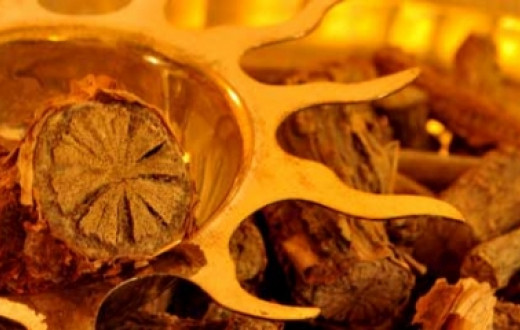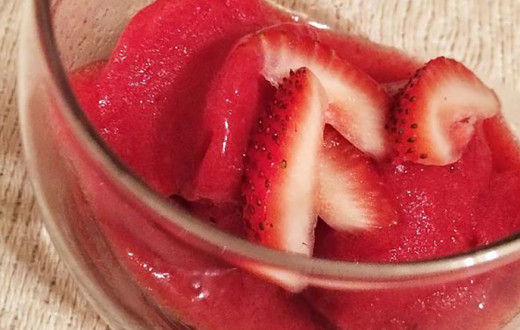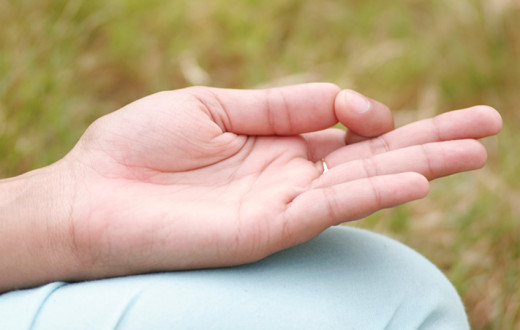Kapha comes from the root word ‘slish’, which means to bind or hold together. It contains the elements of earth and water, and provides the glue to hold the cells of the body together.
Kapha is described as “snigdhah śīto gururmandah ślakṣṇo mṛtsnah sthirah kaphah ||” in the ‘Ashtanga Hrdayam: Sutrasthana’, which means that kapha is oily, cool, heavy, slow, smooth, slimy and stable.
Both physical and psychological stability and strength are governed by Kapha dosha. Structural integrity of the body (cohesiveness to maintain a specific form/shape), immunity against diseases, maintenance of body fluids, boosting of emotions like love, compassion, forgiveness, patience, loyalty are all due to it.
Symptoms of Kapha Imbalance:
Physical
- Excess mucous
- Slow/sluggish bowel movements
- Increase in body weight
- Thick white tongue coat
- Sinus congestion
- Depressed metabolism
- Loss of strength
- Fatty accumulation in the arteries
- Mucoid diarrhea
- Pre-diabetes
- Cold/cough/runny nose
- Hay fever
- Cold sweats
- Excess urination
- Excess ear wax
- Oily skin and hair
- Poor sense of taste and smell
Behavioral
- Lethargy/ drowsiness
- Difficulty rising in the morning/oversleeping
- Possessiveness
- Stubbornness
- Emotional overeating
- Greed
- Melancholy
- Ignorance
- Delusion
Too little Kapha dosha can result in a dry respiratory tract, burning sensation in the stomach.
Effects of Kapha Imbalance:
Physical
- Varicose veins with thrombus
- Severely high cholesterol
- Depression
- Loss of consciousness (as in diabetic coma)
- Diabetes
- Anorexia nervosa
- Profuse edema
- Extreme hypotonia
- Glaucoma
- Gall stones
Behavioral
- Blood in the stools
- Hyperglycemia
- Cystic fibrosis of lungs/ovaries
- Chronic sinus infections
- Congestive heart failure
- Leukemia
- Hypertension
- Liposarcomas
- Hypertrophy
- Enlarged spleen and/or liver
What causes Kapha Imbalance?
- Consuming Kapha aggravating foods (dairy, fatty and oily food, cold drinks, frozen and salty food, sweets, very sweet and sour fruits)
- Overeating, eating heavy meals
- Spending too much time in cold and damp climates
- Lack of physical activity/ sleeping during the day
Balancing Kapha dosha:
- Eating Kapha pacifying diet (bitter, astringent and pungent tasting food)
Foods that can rejuvenate the mind while limiting overall consumption, leafy greens, vegetables, astringent and drying fruits like apples, apricots, peaches and mangoes. Sweetener best suited for kapha dosha is raw honey. - Early to bed, early to rise
- Regular physical activity, vigorous exercise routine (jogging, cycling and other adventures)
- Involving in introspective activities (writing, emotional housekeeping, meditation etc)
- Keeping oneself warm and dry
- Oil massage (abhyanga) with warm sesame oil regularly
- Experiencing lively music, cheerful company
- Yoga
Sun salutations (Surya namaskara)
Half moon posture (Ardha chandrasana)
Revolved chair posture (Parivrtta uthkatasana)
Warrior posture II (Veerabhadrasana II)
Triangle pose (Trikonasana)
Tree pose (Vrukshasana)
Bow posture (Dhanurasana)
Headstand (Shirshasana)
Upward plank pose (Purvottanasana)
Corpse pose (Shavasana)
Yogic breath - Herbs
Triphala
Vyaghryadi (decongestant)
Kanchanara guggulu
Lavangadi vati
Nishamlaki
Amrut






















